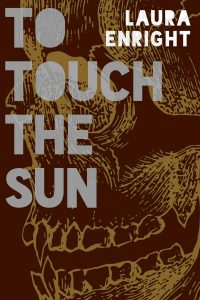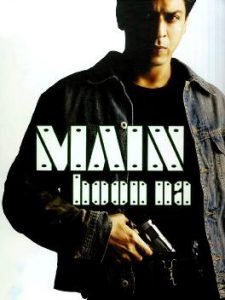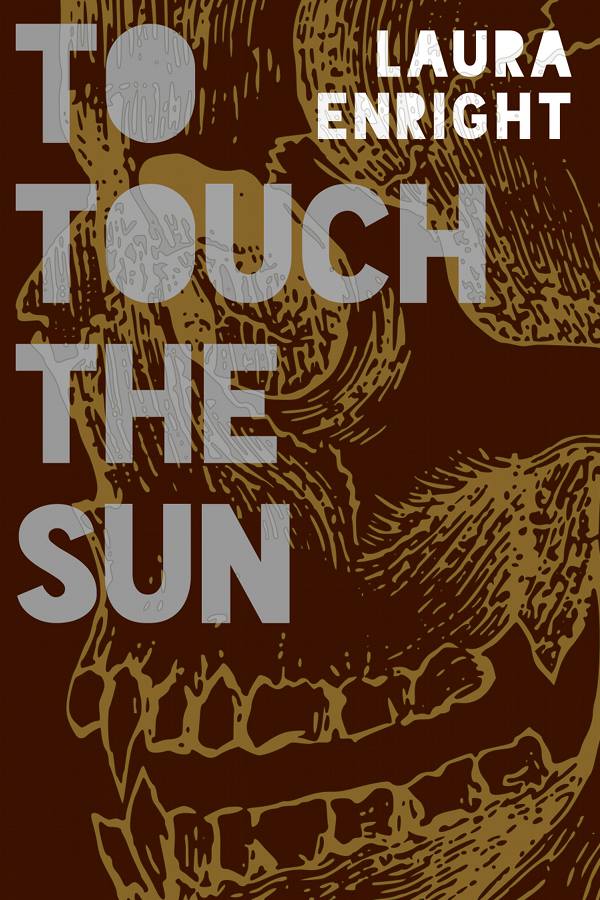
On February 25 my vampire novel, To Touch the Sun, was released by Dagda Publishing. Before that, I had two non-fiction works published by Potomac Books; Chicago’s Most Wanted (2005) and Vampires’ Most Wanted (2009).
When asked why I wrote a vampire novel, I quipped, “Well, everyone should write at least one in their lifetime.” Let’s be honest, there isn’t exactly a drought when it comes to vampires novels.
I think the main difference between other vampire writers and myself is that I actually never had a burning desire to write one. I enjoyed reading them. Dracula (of course); Anne Rice; Richard Matheson’s I Am Legend remains a favorite and more recently, The Strain series by Guillermo Del Toro and Chuck Hogan.
When I wrote Vampires’ Most Wanted, it was amazing to see the variety of legends and stories that are out there. But I never had the urge to write a story; never had that character or concept in mind that gripped me. To Touch the Sun truly came out of nowhere and that is perhaps why it’s been such a labor of love getting it published.
In trying to find an agent for other novels, I was developing a correspondence with an agent who wanted to see more of my work (that’s rare with agents). Noticing that the agency represented a vampire series, and since sometimes you have to zigzag when achieving a goal, I decided to try my hand at the genre.
It was just lucky that also at this point, I had the slightest kernel of an idea picking at my brain involving a vampire chef. I decided to work with that concept to create a novel that perhaps the agent would be interested in representing.
From there the story went through a number of evolutions in plot, narrative and character. My other novels were written with clear plots and characters in mind. Not this one. I had only the notion of a vampire chef. It truly was built from the ground up.

I wanted to give my vampire an ethnicity not often seen in vampire fiction. It’s funny where inspiration can come from. While I was mulling over the character and his motivations I happened to watch the Bollywood movie Main Hoon Na (2004; “I Am Here Now”).
In it, Shah Rukh Khan plays Major Ram Sharma of the Indian army who must go under cover at a college to protect the daughter of a general. Figuring he’ll pose as a teacher, instead, Ram is told that, to stay close to the daughter, he’ll need to pose as a student returning to school.
To protect the daughter, the soldier, raised on the strict discipline of the military, must hang out with a group of free-wheeling students all the while keeping his identity and true purpose a secret. It made me start to think about comfort zones.
No matter how much the vampire may try to fit in (depending on the story), he will always be on the outskirts of society in some way. What struck me in the movie was the effort Ram had to put into living this double life.
That was the sort of energy I wanted for my character who I decided to name Narain cause I liked the name and Khan in honor of the star of Main Hoon Na, Shahrukh Khan and its director Farah Khan.
Narain doesn’t go gently into vampirism. Some, like his nemesis Reg Jameson, are very pragmatic about it. For Narain, it’s difficult. In my universe, the host doesn’t need to die for a vampire to feed yet Narain finds the act morally repellant. A violation of the other person.
He’s also very concerned about passing the condition on and since it’s not certain who will become a vampire, he doesn’t know how not to pass it on. He would feel guilty for asking an innocent person into that life but his greatest fear is passing the condition, with all its physical power, onto a dangerous person.

So he tends to take on a lot of responsibility because, giving his condition, he knows what’s at stake. When a vampire doesn’t feed properly, at some point the body and instinct takes over and the conscience has very little say in the matter. Narain, having attained the status of a well-respected chef and owner of a Chicago restaurant, cannot afford to lose control or everything he’s worked for will be lost.
He didn’t attain this on his own. He had help in his beloved Sophie Grayson, daughter of a millionaire industrialist who he met in 1930s France (their meeting is described in the second novel).
Through the decades not only did her wealth help him attain a relatively normal life, but it was also discovered that he could feed off her and not pass the condition on. This sacrifice in particular helped give him a sense of complacency about the whole thing. Outside of certain inconveniences, Narain could live a relatively normal life.
When the novel opens, Sophie (who is very important to the story even though in the first novel she only appears in reminisces) has been dead for a year. She managed to stockpile blood knowing he would outlive her and hoping to make it easier for him to make the transition to hunting once she was gone. But that complacency he settled into, plus his own grief and confusion, made him deny the inevitable.
He’s at a crossroads. The blood is gone and soon if he doesn’t force himself to feed, he’ll lose control, which could be deadly for whomever he should fall upon in such a state.
Sophie, his love and food source no longer being there offered a key to all the tension in the novel. Unexpected challenges come to Narain throughout To Touch the Sun but always in his response to them is his struggle between keeping the normalcy in his life and the reality of who he is and all that entails.
He says himself that he’s let certain vampire skills atrophy because he hasn’t needed to use them for decades. As the plot unfolds, those skills become more in demand as ghosts from his past keep cropping up.

For me, one of the more interesting concepts to play with in vampire stories, and what is an important theme in the series, is the idea of someone being affected by life altering circumstances.
Narain’s life altering experience came during World War I on the field of No Man’s Land (though one could argue that serving in war in itself would be a life altering experience).
I had read somewhere that Albin Grau, producer of Nosferatu, eine Symphonie des Grauens (1922; “Nosferatu: A Symphony of Horror”), while serving in Serbia during WWI, was told old vampire legends by the Serbian locals.
For some reason, I remembered it as Serbian soldiers telling him about vampires they witnessed during their service. I thought it was a wonderfully creepy idea: Soldiers gazing out onto a darkened battlefield and seeing ghouls loping around.
So the image of vampires feeding off the dead and dying of No Man’s Land (the acreage between trench systems of the Allied and Central Powers) came to me. It’s in this situation that Narain is attacked by ferals after being injured during a push across No Man’s Land in 1917. I called these vampires who attacked the soldiers that night “ferals.”
I wanted to play with the idea of vampirism a little (as so many have done before). I wanted to make the cause physical, not metaphysical, and consequently, it is physical changes and inconveniences that the person must deal with (going back to that life altering circumstance I mentioned earlier).
When I thought of the ferals attacking the soldiers in No Man’s Land, I thought of the mindless feeding machines found in so many legends. For them the acquisition of blood is all that matters.
The ferals attacking Narain and his fellow soldiers are ghostly pale, slightly deformed in the face (particularly the mouth area) wearing clothes they converted in which are often rotting of their bodies from age. They’ll burrow into the earth and hibernate for long periods of time until something awakens them. A plague, a war, something entices them back into the world to feed on anyone in their path.
Narian is what’s known as a sentient vampire. In my universe, all vampires can have a feral nature, especially when their survival is at stake. But generally vampires like Narain can live relatively normal lives outside of certain restrictions (an allergy to the light, the need for human blood, salt being poisonous.
For me such restrictions help add to the tension of the story. A vampire without any would be pretty much invincible, which wouldn’t be good for the normals). It’s uncertain why one person turns feral and one sentient during the fugue state of conversion (usually lasting a week or so—to me such a drastic change in one’s anatomy would take a while). It’s believed perhaps that conversion is such a shock, that some psyches break during it and those vampires never really leave the fugue state.
And yet no one can really predict who will and won’t turn feral. Narain’s nemesis, Reg Jameson ran with a pack of ferals for nearly 10 years after the attack and suddenly snapped into sentience. In turn, he had taken some of the ferals and managed to civilize them, somewhat, proving that the feral state does not have to be a permanent thing.
I started this post stating that I didn’t have a burning desire to write a vampire story. And yet somewhere along the line of creating this novel, the fires flared up and it took on a life of its own. And this hard fought creation was one of the most exciting times of my life.
Once I really understood Narain, I understood where I wanted to take this story. I often describe him not so much a vampire trying to be human but as a human suffering from vampirism and trying to live as normal a life as possible.
Similar to a man living with a chronic yet manageable illness. Everything he does from the moment Narain’s attacked by ferals is done in an effort to regain some semblance of who he was before the attack. And once he’s achieved that normalcy after meeting Sophie, everything he does is in an effort to retain that normalcy, even when it would perhaps be better to accept what he is and the strengths to be found in it.
That’s why I term it as Narain reaching a crossroads at the opening of the novel. He’s knocked off kilter by events in To Touch the Sun and is completely emotionally and mentally unprepared for events in the second novel. By the third novel he’s no longer his own worst enemy having come to terms again with what he is, but then fate steps in and presents him with an entirely different challenge.
Little did I know that that burning desire I didn’t have before writing To Touch the Sun would flare up the more I worked on it. The more I wrote, the more I fell in love with it.
Before I knew it I had written three more novels in the series and a spinoff featuring paranormal investigators featured in novel three. I went from someone who didn’t have a burning desire to write a vampire novel to a person who can’t stop telling the stories of the characters in this universe I’ve created.
As the novel had its evolution, so did I as the writer. I’ve written other novels before but none have gripped me the way this series has. It’s why this has been such a labor of love. More than any novel I’ve ever written I wanted this novel published. It was completely rewarding writing it and I hope people have as much enjoyment reading it as I did writing it.
To Touch the Sun is available on Amazon in paperback and Kindle formats. For more information, visit Enright’s website at or her Sentient/Feral Vampire Series Blog. She’s working on some give-aways, so stay in touch. She’d love to hear from you.
